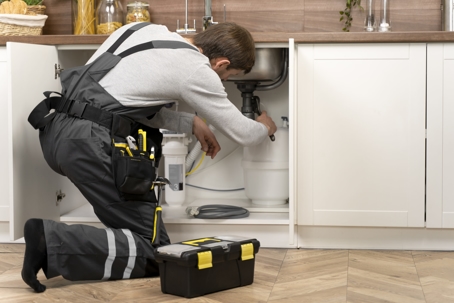A functional water heater is essential for everyday comfort and convenience in any home. Whether you’re upgrading an old unit or dealing with a malfunctioning system, replacing a water heater can seem daunting. In this educational blog post, we’ll walk you through the process of replacing a water heater in a three-bedroom house. From selecting the right type of water heater to installation and maintenance tips, we’ve got you covered.
Assess Your Needs
Before diving into the replacement process, consider the following factors:
a. Type of Water Heater
There are three main types of water heaters:
- Tankless Water Heaters: These provide hot water on demand and are energy-efficient. They don’t require a storage tank and are ideal for smaller spaces.
- Conventional Tank Water Heaters: These store hot water in a tank and are suitable for larger households. They come in various sizes (30, 40, 50 gallons, etc.).
- Heat Pump Water Heaters: These use electricity to move heat from the air or ground to heat water. They are energy-efficient but require more space.
b. Fuel Source
Consider the available fuel sources: electric, natural gas, propane, or solar. Choose one that aligns with your home’s infrastructure and energy preferences.
c. Capacity
Determine the appropriate water heater capacity based on your household’s hot water usage. A three-bedroom house typically requires a 40-50 gallon tank.
Selecting the Right Water Heater
Once you’ve assessed your needs, choose a water heater that meets your requirements. Consult with a professional plumber if you’re unsure.
Removal of the Old Water Heater
Before removing the old unit, turn off the power supply (electricity or gas) and shut off the water supply. Drain the tank by connecting a hose to the drain valve and opening it. Disconnect the pipes and remove the old water heater.
Installation of the New Water Heater
a. Placement
Choose an appropriate location for the new water heater. Ensure proper ventilation and compliance with local building codes.
b. Installation Steps
- Position the new water heater.
- Connect the water supply lines.
- Install a pressure relief valve.
- Connect the gas or electrical supply.
- Fill the tank with water.
- Turn on the power supply.
Safety Precautions
- Always follow the manufacturer’s instructions.
- Use proper tools and safety gear.
- Check for gas leaks (if applicable).
- Test the pressure relief valve.
Maintenance Tips
- Regularly flush the tank to remove sediment.
- Inspect the anode rod and replace if necessary.
- Check for leaks and signs of corrosion.
- Schedule professional maintenance annually.
FAQs on Replacing Water Heaters
How do I know when it’s time to replace my water heater?
You should replace your water heater when it is over 10 years old, leaking, making strange noises, or not producing enough hot water.
What are some signs that my water heater needs to be replaced?
Some signs that your water heater needs to be replaced include rusty water, unusual noises, insufficient hot water, and leaks around the tank.
How long does a typical water heater last before needing to be replaced?
A typical water heater lasts around 10-15 years before needing to be replaced. However, regular maintenance and flushing can help extend its lifespan. Consider replacing it if you notice rust-coloured water, rumbling noises, or leaks.
What factors should I consider when deciding to replace my water heater?
Consider the age of your water heater, energy efficiency, frequency of repairs, and availability of rebates or incentives for a new unit. For example, a unit over 10 years old, requiring frequent repairs, and lacking energy efficiency may warrant replacement.
Is it better to repair or replace my water heater when it starts having issues?
It depends on the extent of the issues. If the repair cost is less than 50% of a new water heater, repairing it may be more cost-effective. For example, if a simple part needs replacing, it would be better to repair it. If the water heater is old and constantly in need of repairs, replacing it may be a better long-term solution.
Conclusion
Replacing a water heater in a three-bedroom house involves careful planning, proper installation, and ongoing maintenance. By following these steps and safety precautions, you’ll have a reliable and efficient water heating system for years to come.
Remember to consult a licensed plumber for professional advice and assistance during the replacement process. Stay informed and enjoy the benefits of a well-functioning water heater in your home!
You may also like to read:

